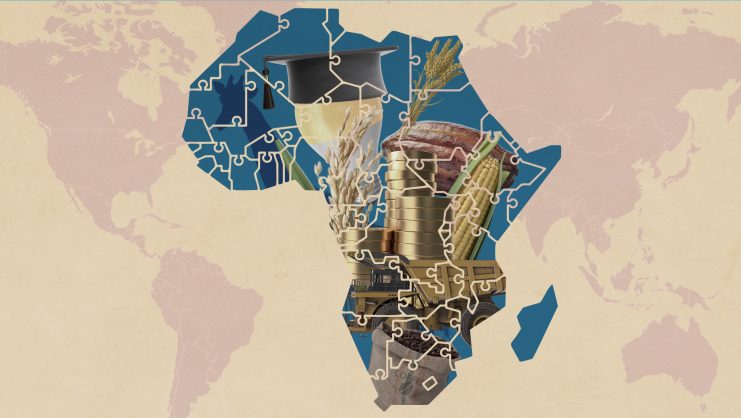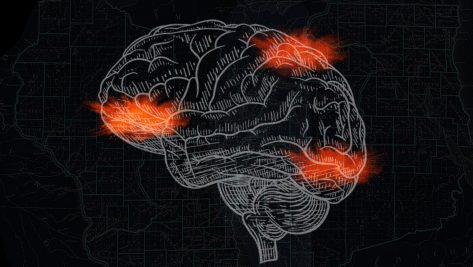The digital environment has implications for companies, not to mention a huge impact on customers and employees. Executives need to see digital reality not as professionals but as increasingly connected users. If the premise is to go where the customers are, most companies are lagging behind in the adoption of technologies. The problem is not a lack of information; the goal is being able to filter it. One example is Zara’s website, which has an outlet section. This terminology allows the company to bypass Spain’s obsolete regulations that establish fixed sales periods. The law also fails to mention online transactions, making it possible to offer discounts year-round on the Internet.
As consumers, we have become increasingly connected, informed, and disloyal. We see this when we book hotel rooms. Most of us have a favorite chain, but often we don’t make the reservation through the website of the hotel itself. Instead, we use search engines, which sometimes offer a better service. This is where the digital world is changing our businesses. It’s not that customers don’t like the product; what they don’t like is how that product is being offered as a service. Therefore, we must stop thinking in terms of products and start thinking in terms of services. Another factor to consider is that customers are paying less attention and have less patience. What do we do during commercial breaks? We turn off the TV to avoid the onslaught of ads.
In order to optimize costs and increase efficiency, all companies and executives should have the following major changes on their agenda: social, mobile, analytics, and cloud.
Four major forces
Four major forces are changing the environment and increasing the influence of the digital world. First, there is the transformation of customers and employees. Second, we are experiencing a new cultural wave—a new philosophy in which technology has become increasingly developed, is more apparent, and is something we like. When people buy the latest smartphone or mobile device, they don’t ask about its characteristics—they take a selfie to show off because having the latest model is a status symbol. Third, the competition can move faster than you do. Don’t wait and see what happens—look at what your competitors are doing. Fourth, and finally, remember the impact of regulation. Governments are forcing companies to implement new technologies in order to increase transparency and traceability and to reduce fraud.
In order to optimize costs and increase efficiency, all companies and executives should have the following major changes on their agenda: social, mobile, analytics, and cloud. These four factors—known by the acronym SMAC—aren’t the future; they’re already here. Unfortunately, many companies lack a strategy at the corporate level. A recent study by IDC found that just 25% of European banks have a formal corporate digital strategy. There are many “islands” and lots of innovation, but little in the way of integrated or consolidated plans. What’s more, offices in different countries do different things. SMAC is the new combination that presents a lot of challenges but also many opportunities. The customers are already there, even if companies sometimes are not.
Traditional and digital clearly coexist, and the integration of these two worlds will create value for businesses and increase customer satisfaction. This assertion is based on the fact that 20% of customers are elderly and never buy anything online, and another 20% only shop online, but nearly 60% shop either online or at brick-and-mortar stores, depending on the situation. Companies must therefore have a multichannel strategy, since these three customer segments force them to have a multicustomer vision. Traditional customers are not going to disappear, and not everyone will become online shoppers.
But the current trend—which society wants and increasing likes—is unstoppable. By market capitalization, the four largest companies in the world are Google, Apple, Microsoft, and Amazon. None of these are from the banking or oil industries. Another aspect to consider is that the world does not need permission to make a business obsolete. Just look at what’s happening with taxis and the Uber model, or what happened to Blockbuster. In 2000, when the American video-rental chain first started to be threatened, it released a report telling investors not to worry because technology was not a danger to its business. A year later, when offered the chance to buy Netflix for less than €1 million, Blockbuster failed to take the start-up seriously.
Strategy is a long-term thing. You have to think about the present, but you also have to keep an eye on what’s coming. Ten years ago, Nokia accounted for 4% of Finland’s GDP. It was a well-known tech firm that sold smartphones, but it was outmaneuvered by Apple despite having spent nearly $40 billion on R&D over the previous decade.
It’s best to ignore computer gurus, and big data doesn’t matter either if it can’t help to address a business problem.
Digital Darwinism
Digital transformation isn’t cheap, but money alone can’t guarantee success—something more is needed. This is digital Darwinism: only the most successful companies will survive. But which ones? The ones that adapt to change? The ones that adopt partial solutions? Or the ones that redesign their business? Merely changing is not enough. Companies need a complete overhaul, because their processes were designed for the paper-based world. What’s needed is bigger than a change of mindset; we’re still reasoning in a pre-digital environment when we should be thinking about the entire life cycle.
Digital transformation is a practice that strives to adapt to changing digital needs, to what the digital world has wrought in our environment. But it should always put the needs and interests of customers and other stakeholders first and reexamine processes with the various affected parties in order to increase value for the company.
The customer should always come first, but this means more than just getting the marketing and sales departments involved, since consumers will ultimately appear in various business areas of the company. Change doesn’t happen on a department-by-department basis; it has to be a vision of processes.
A digital transformation project rests on three pillars: improving customers’ experience by getting to know them better and optimizing contact channels; improving processes (back office), becoming more efficient, reducing costs, and integrating all systems; and rethinking the business model by opening up new avenues.
Reimagining the business
Before thinking about technology, you have to reimagine the business with new products and services, models, and approaches to customer segmentation. You may discover that you have customers of various profiles and that they go online at different times and in different ways, which means more distribution channels and new processes and operations. You also have to look at your employees. A brilliant example is Angela Ahrendts, currently a vice president at Apple, which recently became the world’s no. 2 watchmaker in terms of revenue. Before joining Apple, Ahrendts was the CEO of Burberry, where she managed to turn the business around and reverse the decline of the brand’s prestige. Her first step was to focus on people: hiring employees with digital skills, adjusting the staff in accordance with the company’s new channels. Ahrendts realized that she knew about fashion and business but not about technology, so she decided to have the CIO report to her directly, even though it is more common for this position to report to the CFO. This implies a cultural change.
Ahrendts’s second initiative was to focus on processes: standardizing products, improving integration, and enhancing the company’s customer orientation. In 2008, she made a brilliant marketing move. In order to attract millennial customers, she hired Emma Watson—the actress from the Harry Potter films—to appear in Burberry ads. It was a way to get young people interested in the brand—because of the influencer, not the jackets. The last step Ahrendts took as Burberry CEO was to integrate technology in order to develop a single vision of the customer and an omnichannel strategy. The customers were the same, but they used different channels.
It seems clear that you shouldn’t reinvent your business but rather repair it using a simpler basic technology. An executive’s first digital-transformation move should be to request an audit from the IT department, since 35% of system maintenance expenditures have to do with integration problems. A shocking amount of money is spent on maintenance alone.
Sometimes users don’t want complicated things; they don’t care about your solutions, only their problems.
Putting it into practice
First, define what you want to achieve and put a business strategy in place. Second, focus your goals. You can’t do everything and resources are limited. The next step is to commit to change and make sure the commitment is maintained, as this will be an ongoing issue. You have to understand the impact of the digital world, see what’s happening with your company, and evaluate the digital maturity in your sector with a view to developing a strategy.
It’s best to ignore computer gurus, and big data doesn’t matter either if it can’t help to address a business problem. The first step is to focus on a problem. For example, if customer service isn’t working, take a look at the underlying technology. This should be your perspective, not the other way around. The “Internet of things” is currently in vogue, but what good is it if you haven’t figured out who your customers are? Innovation labs for new-product development are also common, but the problem is that they don’t tend to be user-focused. Sometimes consumers don’t want complicated things; they don’t care about your solutions, only their problems.
© IE Insights.











